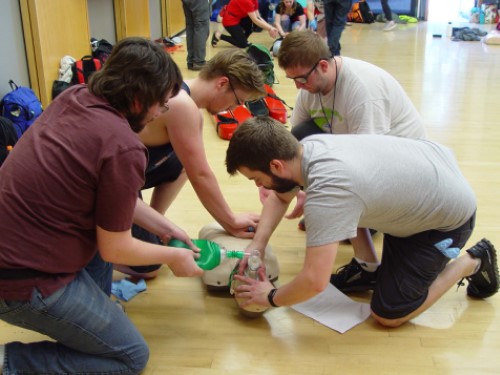Guest Post By Life Floor
By: Briana Massie, Marketing Manager for Life Floor ([email protected])
 Playgrounds and splash pads are designed with very similar intentions in mind. Both provide play features and open spaces that encourage imaginative exploration, running, and risky play opportunities. Playgrounds feature spring riders, slides, and play panels whereas splash pads feature spray jets, dump buckets, and water slides. Where playgrounds are generally dry, splash pads feature constantly flowing water. However, where playgrounds require safety surfacing, splash pads are still being commonly surfaced with concrete, tile, or stone. If splash pads are essentially wet playgrounds (leaving visitors more prone to accident and injury), how are hard, slick surfacing options still permitted?
Playgrounds and splash pads are designed with very similar intentions in mind. Both provide play features and open spaces that encourage imaginative exploration, running, and risky play opportunities. Playgrounds feature spring riders, slides, and play panels whereas splash pads feature spray jets, dump buckets, and water slides. Where playgrounds are generally dry, splash pads feature constantly flowing water. However, where playgrounds require safety surfacing, splash pads are still being commonly surfaced with concrete, tile, or stone. If splash pads are essentially wet playgrounds (leaving visitors more prone to accident and injury), how are hard, slick surfacing options still permitted?
Why Don't We Often See Safety Surfacing at Splash Pads if They're Playgrounds too?

The aquatics industry is so accustomed to seeing concrete and other surfaces at pools that it has turned a blind eye to the problem with using it at splash pads. Many people believe that concrete isn’t an issue at all and that it’s perfectly safe for aquatic play areas. Forty years ago, concrete was considered perfectly safe for dry playgrounds too. It took 78 years from the time dry playgrounds were first introduced in 1903 for the Consumer Product Safety Commission to publish the Handbook for Public Playground Safety in 1981.


 Playgrounds and splash pads are designed with very similar intentions in mind. Both provide play features and open spaces that encourage imaginative exploration, running, and risky play opportunities. Playgrounds feature spring riders, slides, and play panels whereas splash pads feature spray jets, dump buckets, and water slides. Where playgrounds are generally dry, splash pads feature constantly flowing water. However, where playgrounds require safety surfacing, splash pads are still being commonly surfaced with concrete, tile, or stone. If splash pads are essentially wet playgrounds (leaving visitors more prone to accident and injury), how are hard, slick surfacing options still permitted?
Playgrounds and splash pads are designed with very similar intentions in mind. Both provide play features and open spaces that encourage imaginative exploration, running, and risky play opportunities. Playgrounds feature spring riders, slides, and play panels whereas splash pads feature spray jets, dump buckets, and water slides. Where playgrounds are generally dry, splash pads feature constantly flowing water. However, where playgrounds require safety surfacing, splash pads are still being commonly surfaced with concrete, tile, or stone. If splash pads are essentially wet playgrounds (leaving visitors more prone to accident and injury), how are hard, slick surfacing options still permitted?
 Everyone experiences play in different ways. It’s the reason why there isn’t just one type of spray feature or just one type of pool. Aquatic environments are always changing and adapting to new trends and regulations in the industry. Likewise, aquatic facility directors and operators are constantly evaluating updates that will deliver increased value to their guests and members. In order to provide features that appeal to a wide variety of individuals, facility staff members need to choose what combination of elements will allow for limitless play for their intended audiences.
Everyone experiences play in different ways. It’s the reason why there isn’t just one type of spray feature or just one type of pool. Aquatic environments are always changing and adapting to new trends and regulations in the industry. Likewise, aquatic facility directors and operators are constantly evaluating updates that will deliver increased value to their guests and members. In order to provide features that appeal to a wide variety of individuals, facility staff members need to choose what combination of elements will allow for limitless play for their intended audiences.




